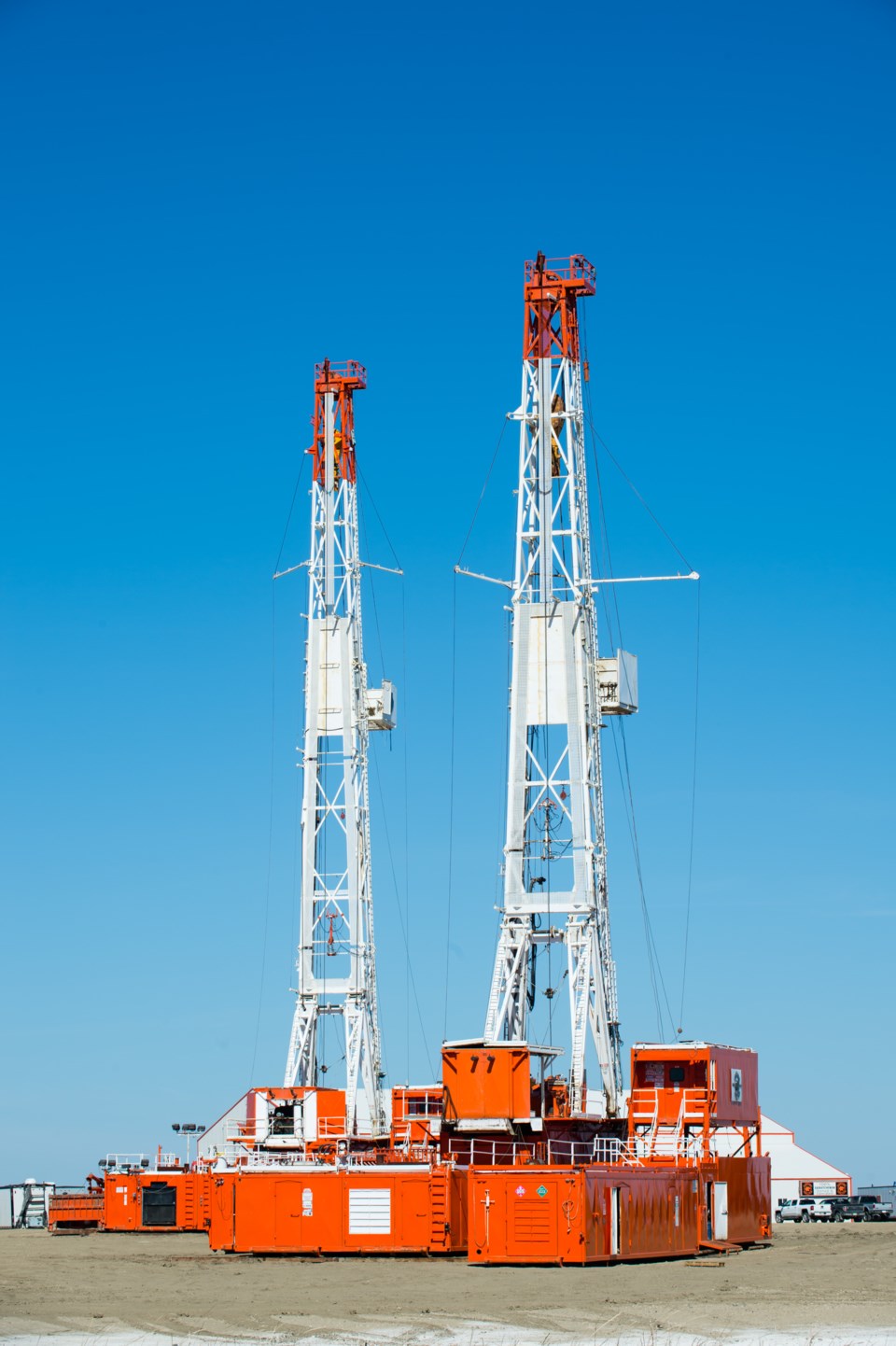Weyburn– Two drilling rigs, standing along Highway 39, east of Weyburn, signify a lot when it comes to the state of the oilpatch. In many ways, they signify hope.
Those two drilling rigs, Panther Rig 1 and Rig 3, were parked early on in the downturn, which firmly took hold in January 2015. That was the last time Rig 3 work before being racked, and Rig 1 shut down in February 2015. Now, after two years idle, the owners of Panther Drilling are showing their faith in the industry by bringing them back into service, ready to go to work.
Cory Hicks is president of Panther Drilling and one of the owners. He spoke to Pipeline News on May 8 at their shop.
“We were down to one rig, Rig 4. Rig 2 finished up a well in October 2015, for Caprice Resources, and it sat out at Macoun. They sat for a year,” Hicks said.Â
“Basically, the reason we set these up was to obviously get them prepared to go to go again, but to shake off that stigma of a cold rig. I’m excited just to have them standing in the yard.”
He stressed they don’t scrimp on their safety or maintenance. “We maintain things,” Hicks said.
“We haven’t gotten into the bowels of them yet, but we could probably have them up and running in a week. It’s going to take some time. I never like being caught. I would do a lot of preventative maintenance – run things, make sure they run right,” Hicks said.
Ian Taylor, who handles sales with Panther, noted that it’s common in downturns to rob parts off one rig to keep another going. But that, in turn, means two rigs are now affected. That’s something they don’t do. Each rig is kept whole.
As of early May, they didn’t have work lined up for Rigs 1 and 3, but Taylor noted, “We’ve got multiple bids out right now.”
“But nobody’s pulled the trigger yet, so to speak,” Hicks added.
“Honestly, having these things standing, a.) does give hope, and b.) for me, more than anything, it was getting the rigs stood so they can be looked at so I can run the pumps. I can pick up the Kelly. It allows us to see what we need to do. A drilling rig is not like a service rig, no disrespect to them, but a drilling rig needs a little more time to get ready to go out again, because I don’t like having surprises.”
As of the time of writing, it’s been a relatively dry spring, which means that, unlike many of years since 2011, the drilling rigs might be able to go out early.
At their height, with four rigs working, Hicks said they had 106 employees, including office staff and swing crews. Most recently that number was reduced to 21 people in the field, on one rig, with four office staff. With two rigs going, the number adds up to 46.
Should Rigs 1 and 3 go back to work, they’re going to have to have to find more staff. Much of that would be done by word of mouth, Hicks said. “The majority of our core people, we retained.”
They’ve also maintained relations with a number of people who’ve been idled.
As oil prices go up and down, that affects oil company’s plans. On the day of the interview, oil was around US$44 per barrel for WTI oil. “When oil was down below US$30, that was their line,” Hicks noted, saying each oil company has its own comfort level.
Production does continually decline, and it has to be replenished, he noted. Hicks believes that the pent-up demand will drive some drilling.
In addition to reactivating Rigs 1 and 3, Rig 4 has been undergoing a Level IV inspection with Irwin Machine Shop in Oxbow. Maple Leaf Consulting is doing the inspection. That rig spent much of 2016 working not far from Alameda and Oxbow. “Overall, it’s going well,” Hicks said.
In recent years, drilling rig efficiency has increased to the point where the State of North Dakota notes they can now accomplish the same amount of productivity with half the drilling rigs that used to operate within the state just a few years ago. With advances in polycrystalline diamond cutter drill bits, mud motors and muds, the number of days to drill a well has continually dropped over the years.
“The crews are what makes or break a rig,” Hicks said. “That’s not just on the rig, but your other services, too, your cementers, your directional drillers, your consultants – all that plays into it. There’s a human factor, too.
“I believe the tech has helped immensely, but you still need good guys and girls in the field.
“Is there a limit to how efficient you can get? You constantly want to improve your company and improve efficiency. But have we come to a point here is there any more to cut?”
Hicks noted that Rig 3 has done wells in 5.5 days from spud to release for a Bakken well – the fastest well of that type, at the time. A decade ago, a similar well might have taken 11 days.
Hicks is looking to an active second half of 2017 drilling.




